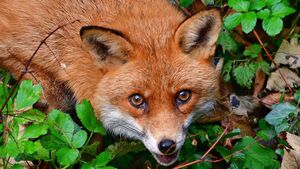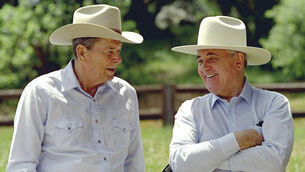The sly, secretive fox is the ultimate survivor

A beautiful fox on the banks of the River Dodder in 2023. This wonderful image was a finalist in the Irish Examiner photography competition. Picture: James Grandfield, Dublin
Despite many perils, the fox survives in the Ox Mountains. It seems at times that the tougher it gets for the fox, the better he is able to cope with the changes and hardships that are hurled at him. Much maligned in some circles, persecuted in others, the fox still maintains an air of secrecy and mystery. He is our ultimate survivor.
Writing in 2014, Kat Kerlin of UC Davis (California), takes us back to the fox’s earliest origins. Her study, , contains some great information.
While the fox is old, his ancient ancestors are older. Foxes are part of a family called canidae, which includes dogs, wolves, and jackals. Scientists agree that these species share a common ancestor, a dog-like creature called Prohesperocyon that lived about 40 million years ago.
The fox has been in Ireland for at least 5,000 years and it may even be one of the first post-glacial settlers on this island as far back as 10,000 years ago. One of the most successful small predators in the world, foxes have spread from tundra to temperate forests in huge numbers. They prey on small rodents, reptiles, and birds, but in some parts of the world they are themselves vulnerable to larger predators.
The fox features widely in both worldwide and Irish folklore. It is no great surprise really because of their relatively secret lives and their reputation for being clever and sly. All of this makes them an animal of considerable intrigue.
In Celtic mythology, the fox is wise and cunning. A trickster who knows the forest better than anyone else, the fox symbolises the need to think fast and strategically. Highly adaptable creatures, they also symbolise the need to adjust to new situations. In ancient Celtic cultures, the fox was also seen as a messenger of the otherworld, and was believed to possess magical powers.
In European folklore, foxes are again portrayed as having a reputation of being tricksters. The character of Reynard is thought to have originated in Lorraine folklore, from where it spread to France and Germany.
Aesop, a popular character of ancient Greece, was known for his animal fables and had numerous stories featuring foxes. The fable, , was one that tells the story of a fox who tries to steal grapes that hang out of his reach, and try as he might, he cannot get them. After giving up, the fox says, “They’re probably sour anyway,” which is the origin of the phrase “sour grapes”.
This description of the habitat of the fox seems like he has the perfect home here in the Ox Mountains: rivers, wetland, marshland, deciduous woodland, mixed woodland and arable land. The Vincent Wildlife Trust provides information in relation to fox distribution in Ireland.
How the fox survives, and indeed thrives, is a minor miracle. They come in for a lot of bad press and suffer no end of persecution. The fox is not legally protected here, due its widespread distribution and abundance.
There is a long history of exploitation of the fox in Ireland. Fox skins were exported from Ireland as far back as the eighteenth century and were used as clothing here long before that. There is also evidence of fox hunting as a sport in early Ireland as it is described in a story in the Táin. Modern fox hunting with horse and hounds only developed here in the nineteenth century.
The income of many poor people was also augmented by trapping and killing foxes in times past. A recent article in the by Liam Collins (July 21, 2024) under the heading, , paints a cruel image.
A strange contrast comes into play when we consider the fox. On one hand, we have the sly and cunning animal of the wild who is perceived to be the demon of poultry pens and sheep flocks. On the other, we have the handsome Mr Fox, a beast of natural beauty and extraordinary intellect. Apart from the endearing robin, the fox is one of our fondest Christmas card images.
Thankfully, the fox has a few trump cards, among them his secret life and his adaptability. At times, we might think we are cleverer than the fox but really, we don’t know him well enough to ever get the upper hand… and I, for one, am ok with that.






